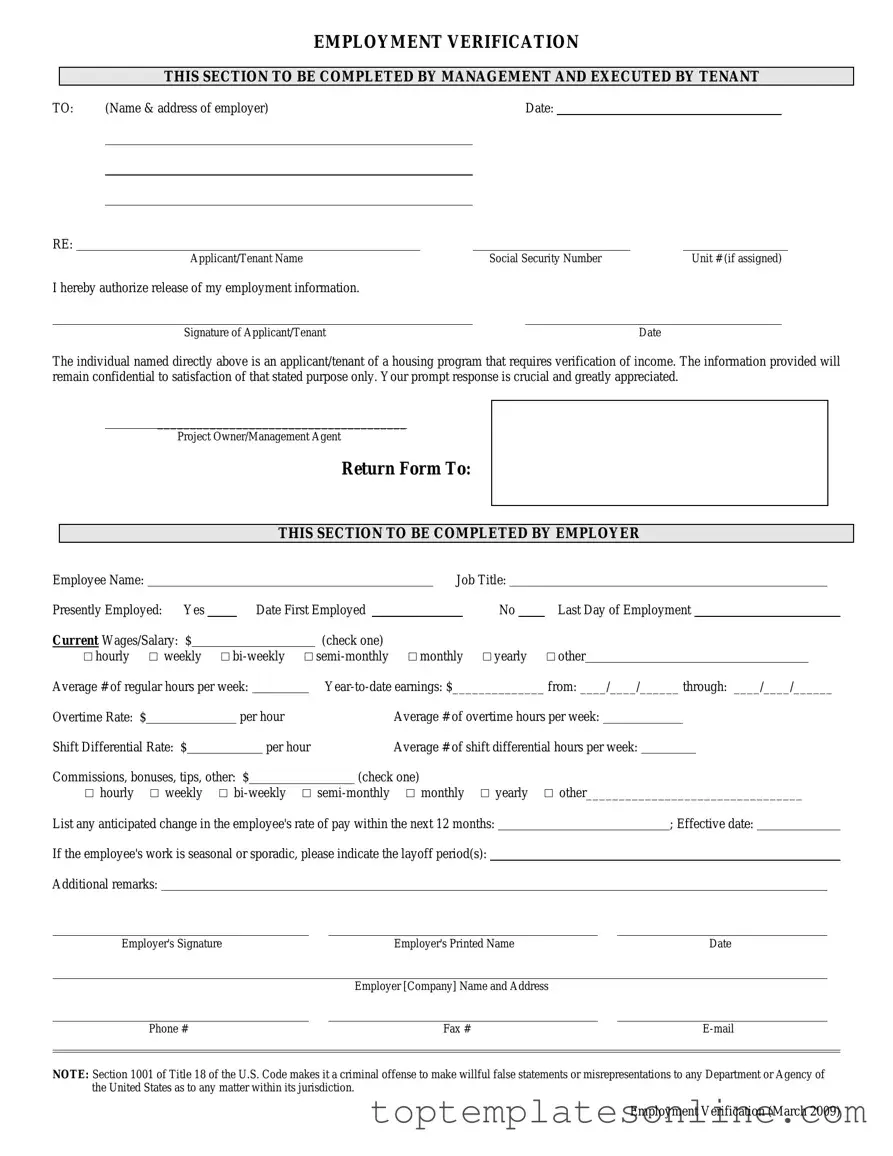Fillable Employment verification form Form
The Employment Verification Form is a document used by employers to confirm a candidate's employment history and qualifications. This form plays a crucial role in the hiring process, ensuring that the information provided by applicants is accurate and reliable. By verifying employment details, companies can make informed decisions about potential hires.
Customize Employment verification form Here
